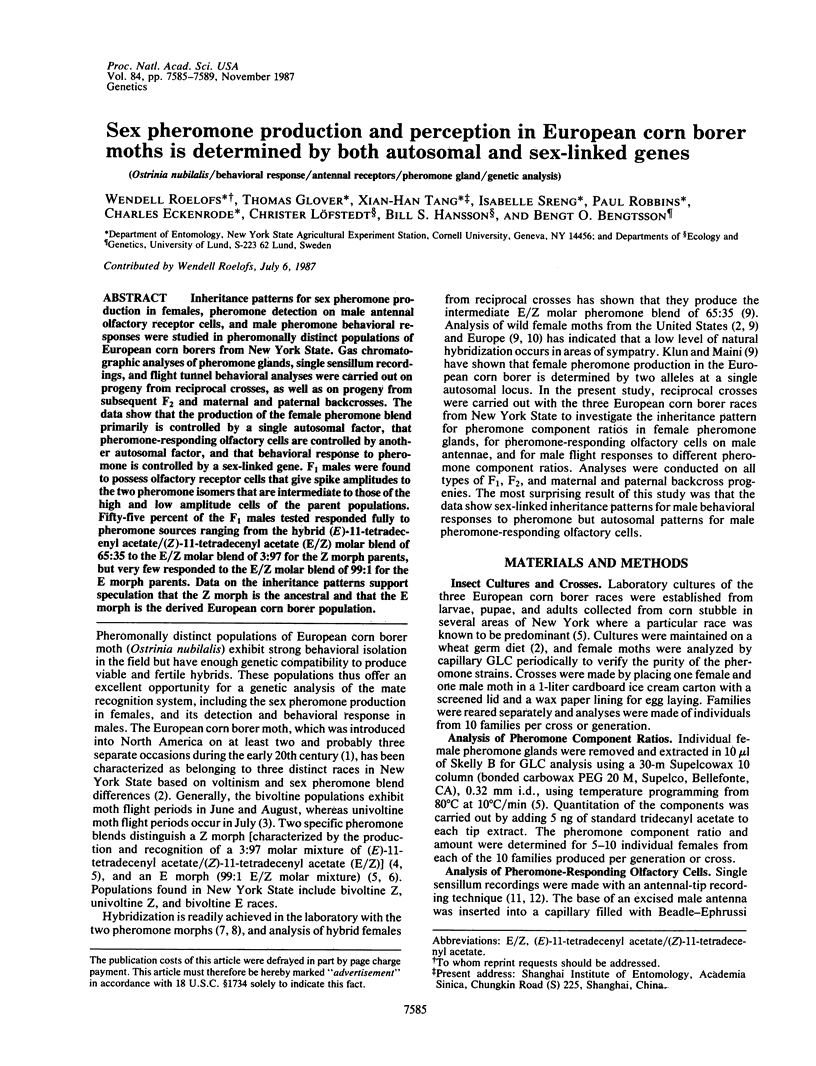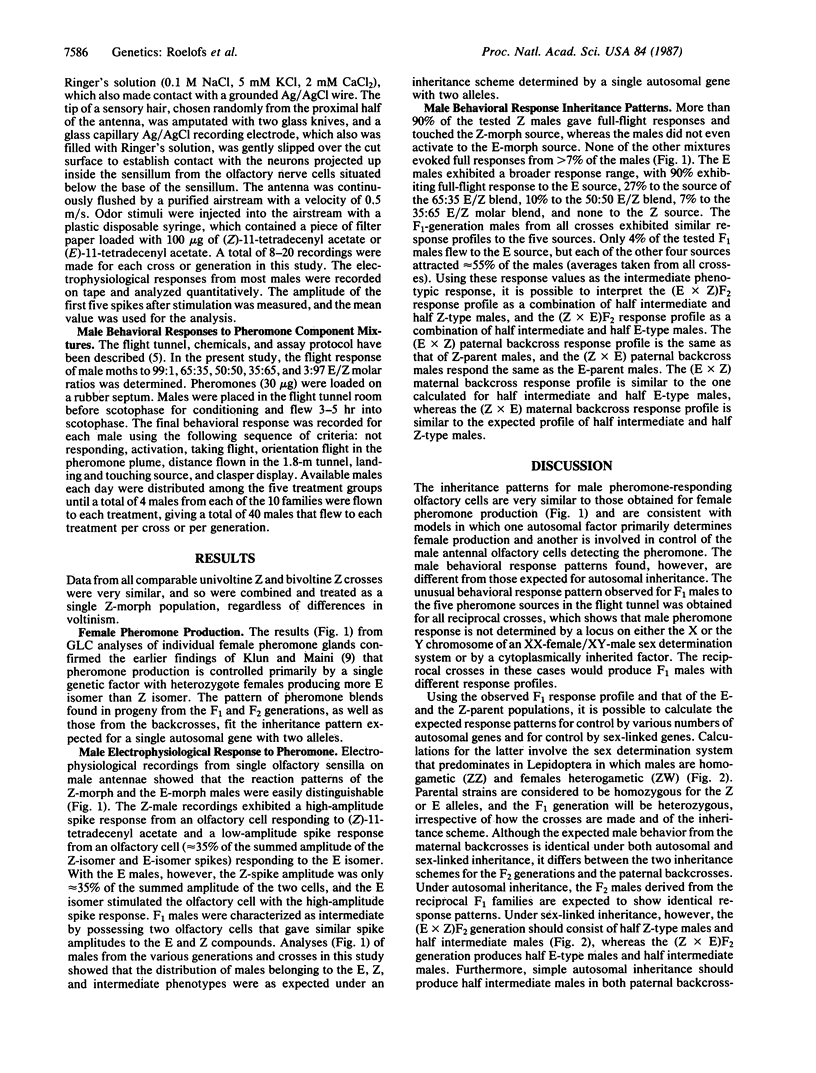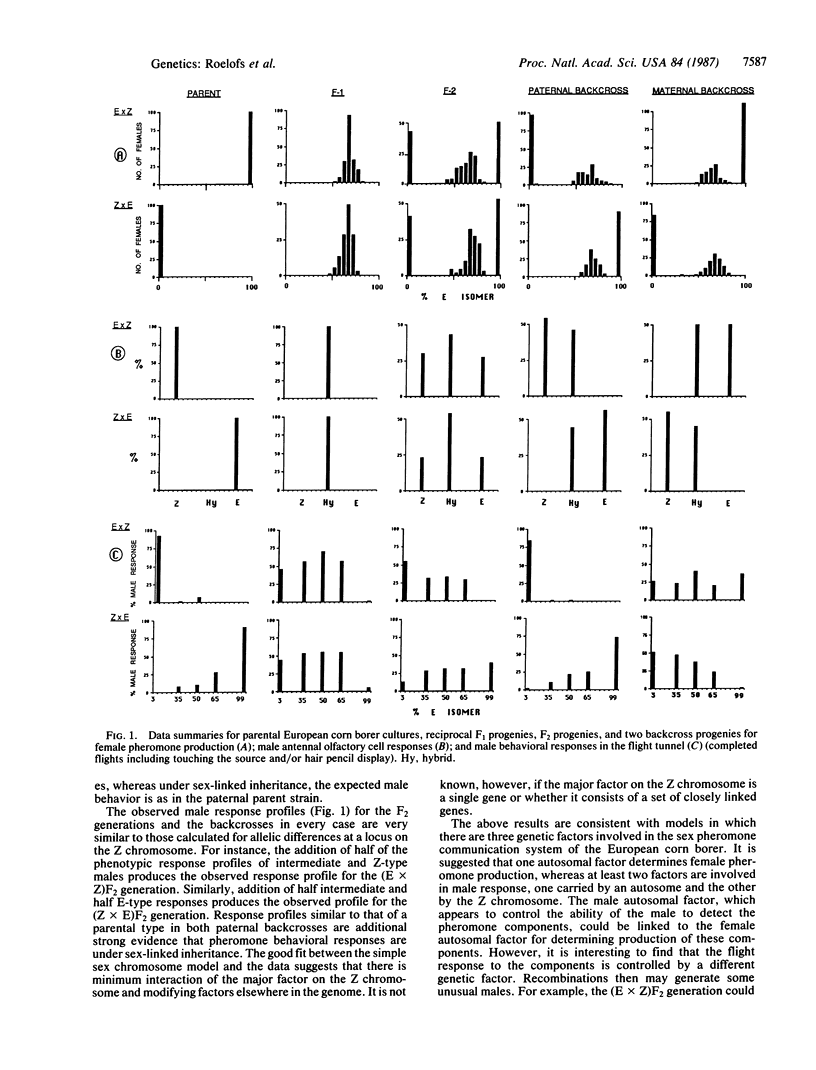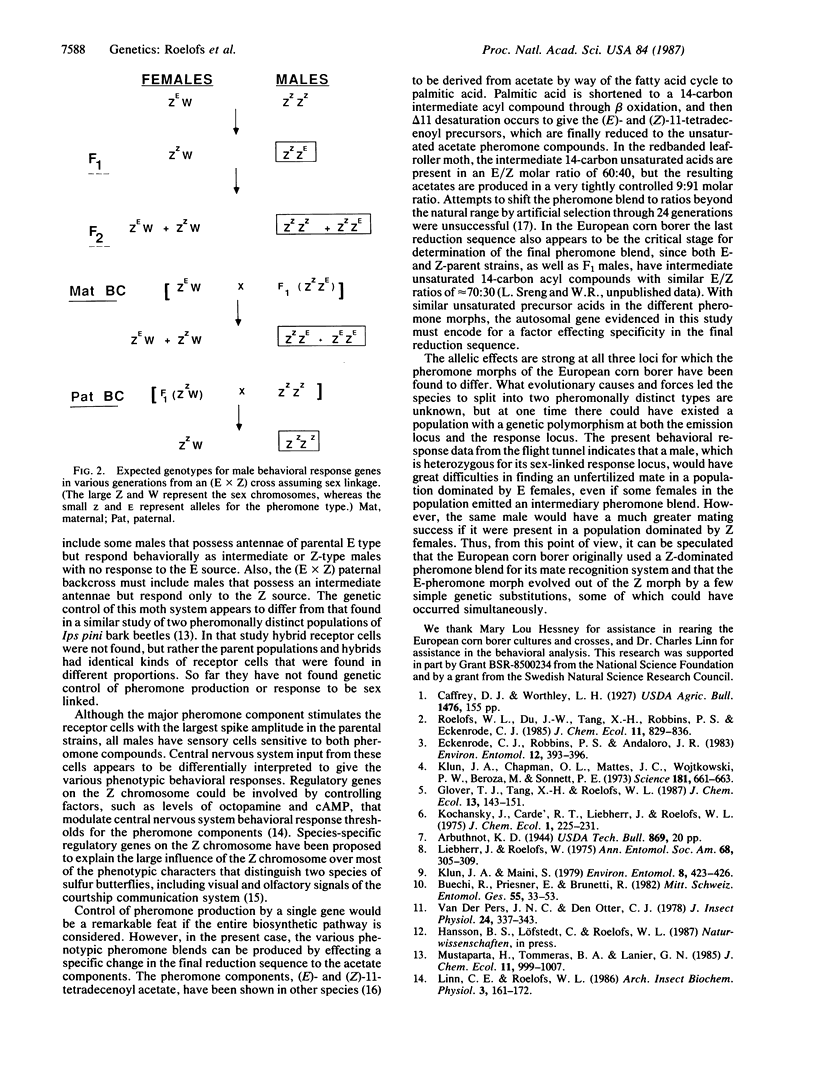Abstract
Inheritance patterns for sex pheromone production in females, pheromone detection on male antennal olfactory receptor cells, and male pheromone behavioral responses were studied in pheromonally distinct populations of European corn borers from New York State. Gas chromatographic analyses of pheromone glands, single sensillum recordings, and flight tunnel behavioral analyses were carried out on progeny from reciprocal crosses, as well as on progeny from subsequent F2 and maternal and paternal backcrosses. The data show that the production of the female pheromone blend primarily is controlled by a single autosomal factor, that pheromone-responding olfactory cells are controlled by another autosomal factor, and that behavioral response to pheromone is controlled by a sex-linked gene. F1 males were found to possess olfactory receptor cells that give spike amplitudes to the two pheromone isomers that are intermediate to those of the high and low amplitude cells of the parent populations. Fifty-five percent of the F1 males tested responded fully to pheromone sources ranging from the hybrid (E)-11-tetradecenyl acetate/(Z)-11-tetradecenyl acetate (E/Z) molar blend of 65:35 to the E/Z molar blend of 3:97 for the Z morph parents, but very few responded to the E/Z molar blend of 99:1 for the E morph parents. Data on the inheritance patterns support speculation that the Z morph is the ancestral and that the E morph is the derived European corn borer population.
Keywords: Ostrinia nubilalis, behavioral response, antennal receptors, pheromone gland, genetic analysis
Full text
PDF




Selected References
These references are in PubMed. This may not be the complete list of references from this article.
- Klun J. A., Chapman O. L., Mattes K. C., Wojtkowski P. W., Beroza M., Sonnet P. E. Insect sex pheromones: minor amount of opposite geometrical isomer critical to attraction. Science. 1973 Aug 17;181(4100):661–663. doi: 10.1126/science.181.4100.661. [DOI] [PubMed] [Google Scholar]


